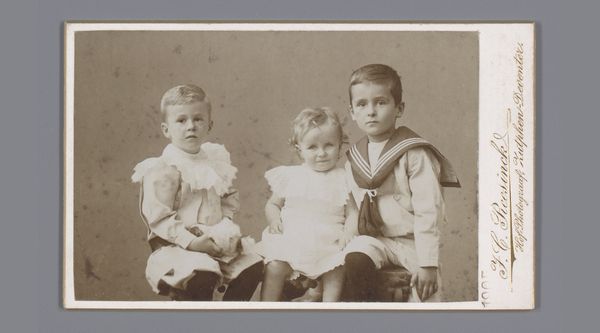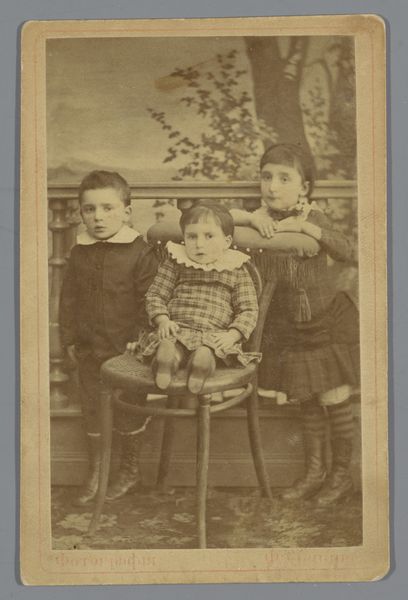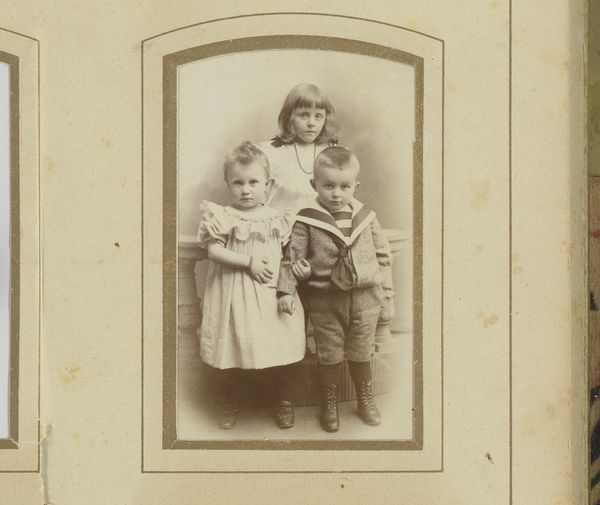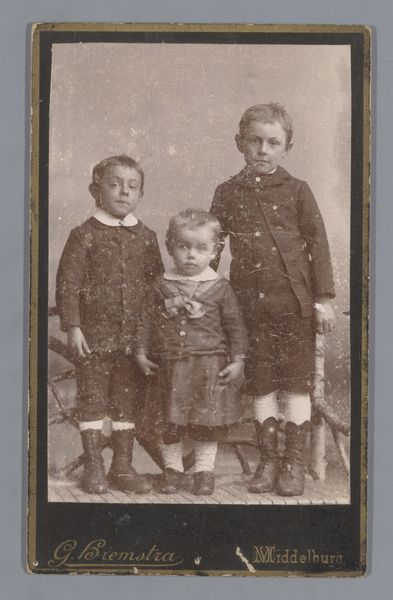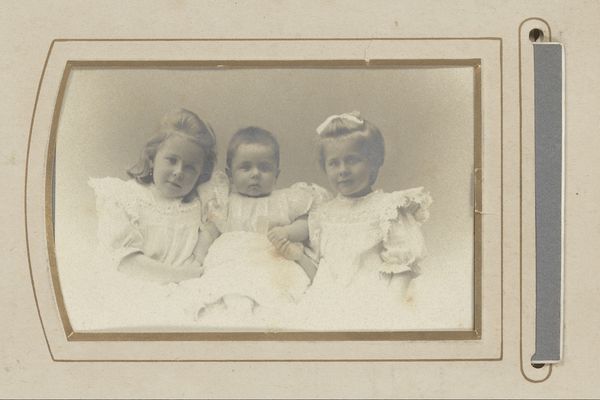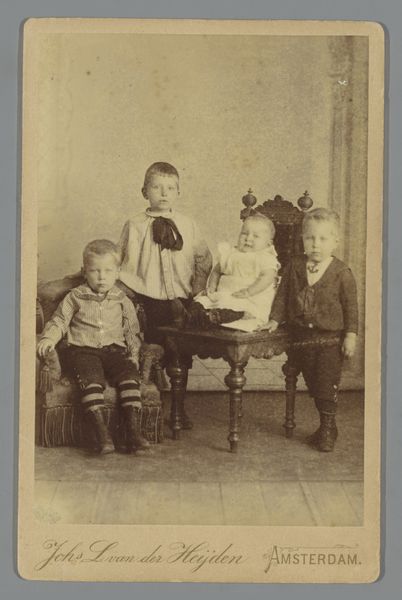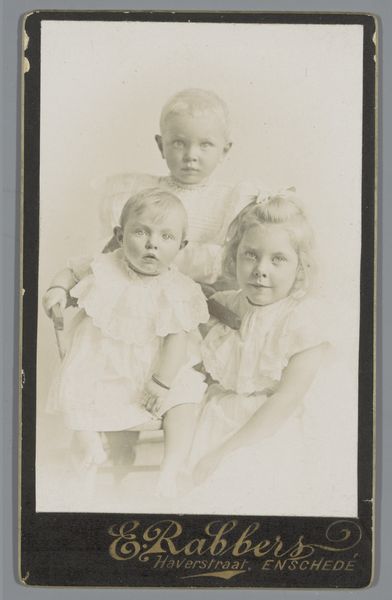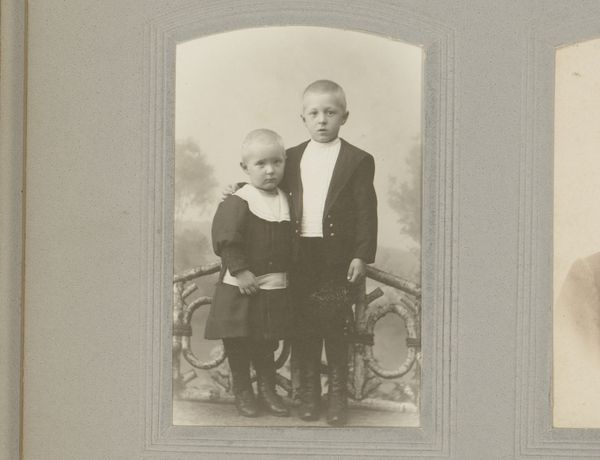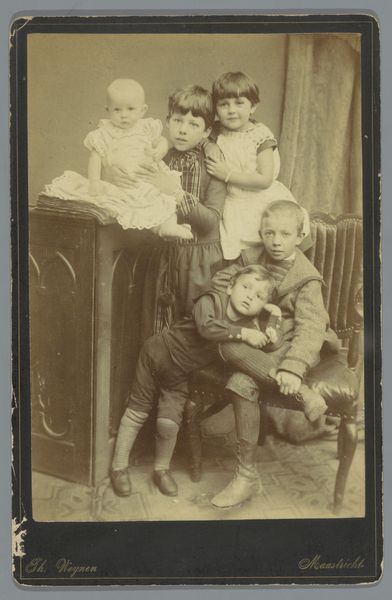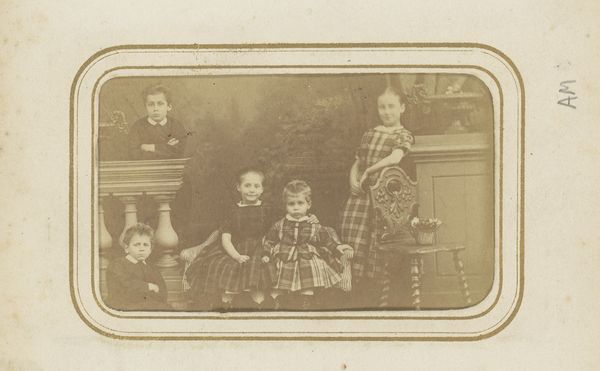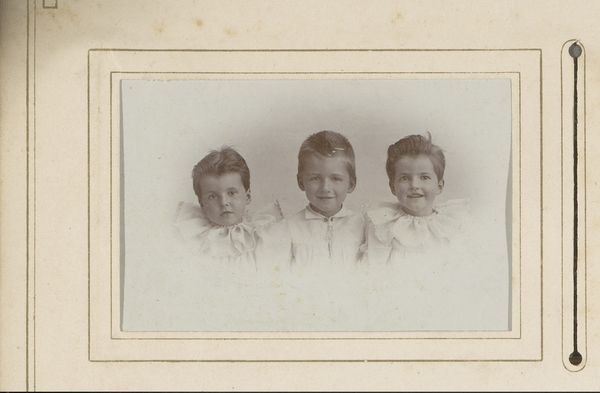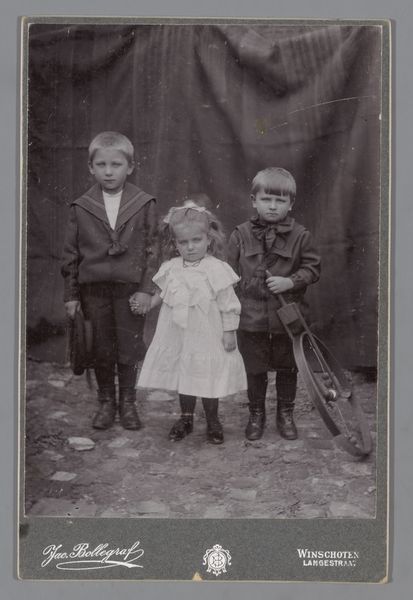
Dimensions: height 318 mm, width 260 mm
Copyright: Rijks Museum: Open Domain
Editor: This gelatin-silver print, taken sometime between 1890 and 1920 by an anonymous photographer, presents a group portrait of five children arranged on and around an ornate bench. There's something very staged about it, yet their expressions feel so natural. What's your read on this piece? Curator: It's interesting how posed photographs like this one offer us a glimpse into a very specific social performance. Notice their clothing. The sailor suits, the suspenders—these aren’t everyday garments for working-class children. This image is carefully constructed to project an image of middle-class respectability and perhaps even aspirations to a higher social status. What do you make of the backdrop? Editor: It looks like an ordinary garden to me, although somewhat obscured. How might that influence our interpretation? Curator: Well, even the seemingly "natural" garden is a constructed space. It suggests a domesticity, a private world, that contrasts sharply with the rapid industrialization and urbanization happening during that period. It hints at a retreat from the public sphere, a refuge perhaps. Who would commission a photograph like this and why? Editor: Probably parents wanting to document their children's upbringing, solidifying memories, but also signalling social standing, like you suggested. I wonder how conscious they were of the socio-political implications? Curator: Exactly. These seemingly innocent family portraits become powerful documents, revealing aspirations, anxieties, and the self-fashioning practices of a particular social group in a transformative era. Consider how portraiture changed over time from painting to photography and then...the snapshot. The political role of art changes across history and location. Editor: That gives me a new appreciation for these historical photographs. It is a glimpse into how people wanted to be seen and the social forces shaping those desires.
Comments
No comments
Be the first to comment and join the conversation on the ultimate creative platform.
